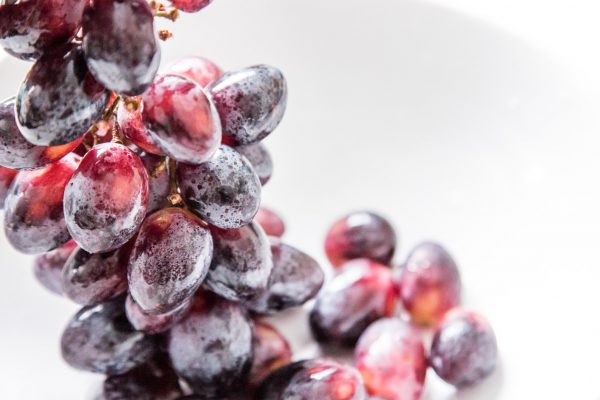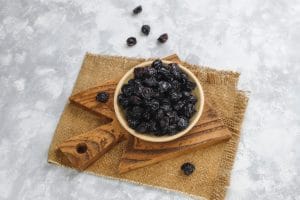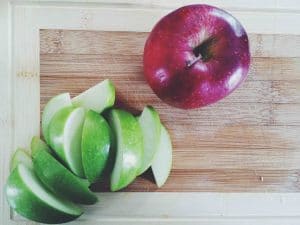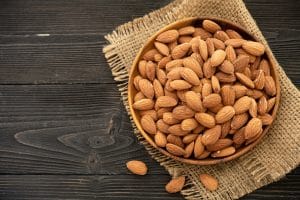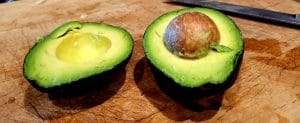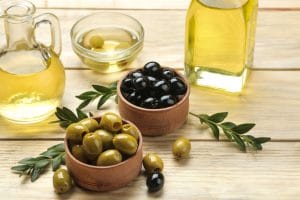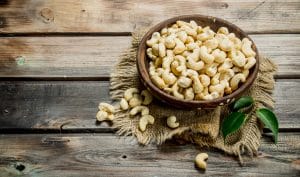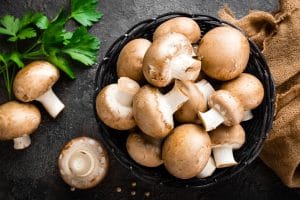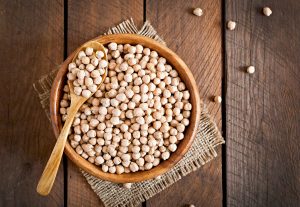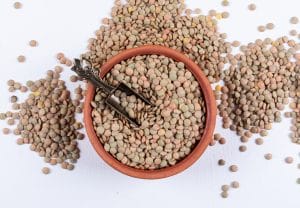Are Grapes Low FODMAP?
Important Note: When you buy through our links, we may earn a commission. As an Amazon Associate we earn from qualifying purchases. Content, pricing, offers and availability are subject to change at any time - more info.
Choosing the right fruit to accommodate a low FODMAP diet can quickly feel like treading on a minefield. While most fruits are high FODMAPs, some varieties barely make the cut, and others continuously surprise as low FODMAPs despite their high sugary content. So, where do grapes fit in the FODMAP spectrum?
Red, green, and purple grape varieties are all low FODMAP. So, you can safely eat generous serving sizes of one cup or 8 oz grapes, about 30 average size grapes. More so, limit portion sizes of dried grapes to 0.45 oz or 1 heaped Tbsp as the dehydration process increases their fructan content.
Despite their super sweet taste, grapes are an exceptionally low FODMAP fruit that you can enjoy on a low FODMAP diet. However, their counterparts, aka raisins, need to be limited to smaller portions as the fruit generates fructans during dehydration.
For a detailed overview, continue reading to find out the benefits of adding grapes to your low FODMAP diet and why you need to limit your portion sizes.
- Are All Grape Varieties Low FODMAP?
- What Are FODMAPs?
- Are Raisins Low FODMAP?
- Are Sultanas Low FODMAP?
- Is Grape Juice Low FODMAP?
- Why Should You Limit Your Intake Of Low FODMAP Grapes?
- Are Grapes Healthy?
- So, Are Grapes Low FODMAP?
Are All Grape Varieties Low FODMAP?
All grape varieties, including red, green, and purple grapes, are considered low FODMAP to almost FODMAP free. Therefore, grapes are one of few fruits that you can consume generous amounts of without the fear of experiencing uncomfortable, irritable bowel syndrome (IBS) symptoms.
According to Monash University, a low FODMAP serving size is 1 cup or 8 oz. grapes. So, on average, you can enjoy about 30 fresh grapes per single serving.
Additionally, grapes are safe enough to consume during the elimination phase of the FODMAP diet. However, grapes do not suit everyone due to their high carb content.
While grapes are yummy fresh, they also make a delightful frozen snack! All it takes is washing and freezing the grapes for a few hours for a sweet, icy, and FODMAP-free snack.
What Are FODMAPs?
FODMAPs are a family of short-chain carbs known as “fermentable oligo-, di-, monosaccharides, and polyols” that tend to be resistant to digestion. So, instead of absorbing into the bloodstream, these carbs move down into the far end of your large intestine, where the gut bacteria consume these undigested carbs and use them as fuel for energy.
In turn, as the bacteria consume the FODMAP carbs, they produce hydrogen, a gas that causes uncomfortable digestive symptoms in individuals with IBS or sensitive to FODMAP foods. The FODMAPs also draw liquid into the intestine, causing diarrhea.
Shortly put, the low FODMAP diet involves removing the five families of fermentable carbs from your diet:
- Fructans (wheat, rye, garlic, and onions)
- Galactooligosaccharides (legumes)
- Disaccharides (lactose found in dairy products)
- Monosaccharides (fruits with fructose as the primary carb)
- Polyols (artificial sweeteners)

Are Raisins Low FODMAP?
Raisins are a dried and even sweeter version of fresh grapes.
Although grapes are close to FODMAP-free foods, Monash University states that raisins are a medium FODMAP that should be restricted to 1 Australian Tbsp or 0.45 oz. per single serving.
Fortunately, a heaped tablespoon of raisins goes a pretty long way for baking, snacks, or in your oatmeal.
You probably find yourself wondering why grapes get the green light in large portions of up to 1 cup while their dehydrated counterpart- raisins get the red light in small servings over 1 Tbsp?
The primary reason grapes get the green light in one form, and not the other is that we typically consume more raisins than grapes. But, then, the quantity of FODMAPs present in fruit differs from the alteration in the plant content due to storage time, temperature, water content, and ripeness.
So, once you dehydrate grapes to make raisins, the high-water content is removed, concentrating the other components in the grapes (now raisins). In this case, oligos-fructans, the “O” in FODMAP, is the main ingredient concentrated, making raisins high FODMAP in servings larger than 1 Tbsp.

Are Sultanas Low FODMAP?
Sultanas, also called golden raisins, are dried grapes made from white-fleshed grape varieties. Compared to raisins, sultanas are smaller and sweeter but are used similarly to raisins.
Sultanas are considered a moderate FODMAP food due to the high amounts of oligos-fructans. So, if you’re following a low FODMAP diet, it’s best to avoid eating them.

Is Grape Juice Low FODMAP?
While not officially tested, grape juice is made from pressing fresh grapes, and considering that fresh grapes are low FODMAP foods, grape juice should be relatively safe to consume.
Furthermore, according to a 2017 study, white grape juice consumption resulted in a slight rise in breath hydrogen, suggesting that excluding grape juice due to its fructose content is unnecessary.
The study also suggests that the fructose-to-glucose ratio is more important than the total fructose content of a low-FODMAP diet. However, more research is required to determine whether grape juice can be a safe beverage option for individuals following the low-FODMAP diet.
Why Should You Limit Your Intake Of Low FODMAP Grapes?
Despite fresh grapes being close to FODMAP free, it’s best to stick to the limited recommendation of 1 cup per serving.
So, before gorging into the whole box of grapes, you need to remember that all fruit contains fructose to some extent. Therefore, one serving of “suitable” fruit per sitting typically equals one metric cup or one whole piece of fruit (like a medium orange).
If you’d like to dive into another portion of delicious, fresh grapes, be sure to wait two to three hours between each serving.
Are Grapes Healthy?
Grapes contain various essential nutrients and potent plant compounds beneficial to your health.
Despite their excess sugar content, grapes have a low glycaemic index. So, they do not appear to affect blood sugar levels.
Furthermore, grapes are packed with antioxidants like resveratrol that aids in reducing inflammation and preventing cancer, heart disease, and diabetes. Additionally, grapes contain vital vitamins and minerals, including more than one-quarter of the recommended daily intake of vitamin C and K.
So, feel free to incorporate grapes into your diet, whether fresh, frozen, juiced or as wine.
So, Are Grapes Low FODMAP?
Grapes are considered low FODMAP fruit that you can enjoy on a FODMAP diet without the fear of upsetting your stomach. However, keep your portions limited to 1 cup of grapes as they contain high amounts of carbs.
More so, be sure to restrict eating raisins to 1 tbsp per serving to prevent IBS symptoms.
Enjoy eating grapes fresh or frozen as a healthy snack enriched with antioxidants, vitamins, and minerals.
